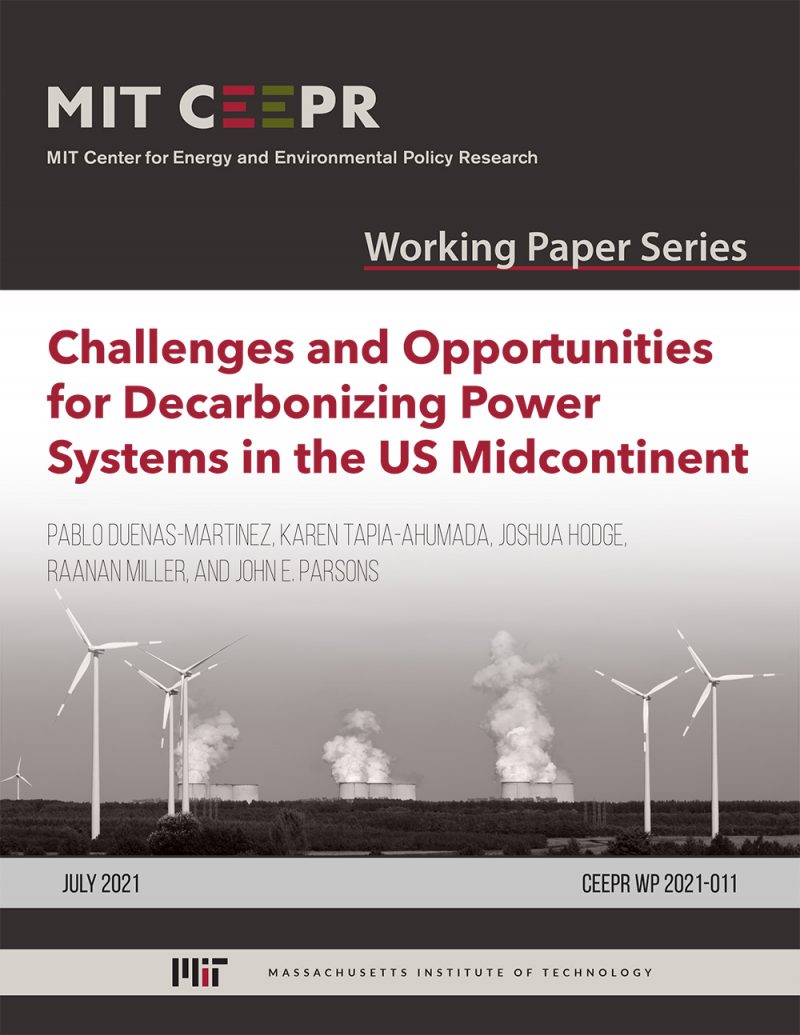Challenges and Opportunities for Decarbonizing Power Systems in the US Midcontinent
Pablo Duenas-Martinez, Karen Tapia-Ahumada, Joshua Hodge, Raanan Miller, and John E. Parsons
July 2021
As a central element of its climate policy agenda, the Biden Administration has declared a goal to decarbonize the national power system by 2035. This ambitious goal will require an accelerated substitution of fossil fuel with renewable generation over the next decade. In this paper, we assess options for rapid decarbonization of the power system with a focus on coal-reliant states across the midcontinent, where a diversity of entities share responsibility for maintaining a reliable and affordable supply of electricity. In our analysis, we utilize a capacity expansion model to characterize the region and evaluate the impact of decarbonization policies such as carbon pricing and renewable energy mandates on prices, operations, costs, and emissions. We define decarbonization objectives in such a way that the most stringent scenarios, calling for emission reductions above 85% or more align with the Administration’s carbon-free goal by 2035. Our detailed modeling allows us to estimate annual hourly profiles of relevant outputs: prices, power generation, renewable curtailments, and plant cycles. All decarbonization scenarios involve wind and solar generation displacing coal and fuel oil power plants to a greater or lesser extent, depending on the level of decarbonization and the type of policy. Natural gas generation remains in the system to support the integration of renewable generation, again to a greater or less extent, depending on the level of decarbonization and the type of policy. Nuclear generation remains central if the policy is to be cost efficient. Batteries remain a marginal technology. These levels of renewable penetration produce important challenges system managers will have to meet in order to maintain reliability. Decarbonization creates more volatility in system marginal cost, with more scarcity hours and more hours of zero or negative marginal cost. This suggests a need for implementation of capacity mechanisms to reduce perceived risks in financing capacity. Finally, we observe that a specific decarbonization policy can generate local distress for certain entities, e.g. cooperatives, suggesting a need for cooperation and agreement among all relevant stakeholders, potentially flanked by compensation payments.



